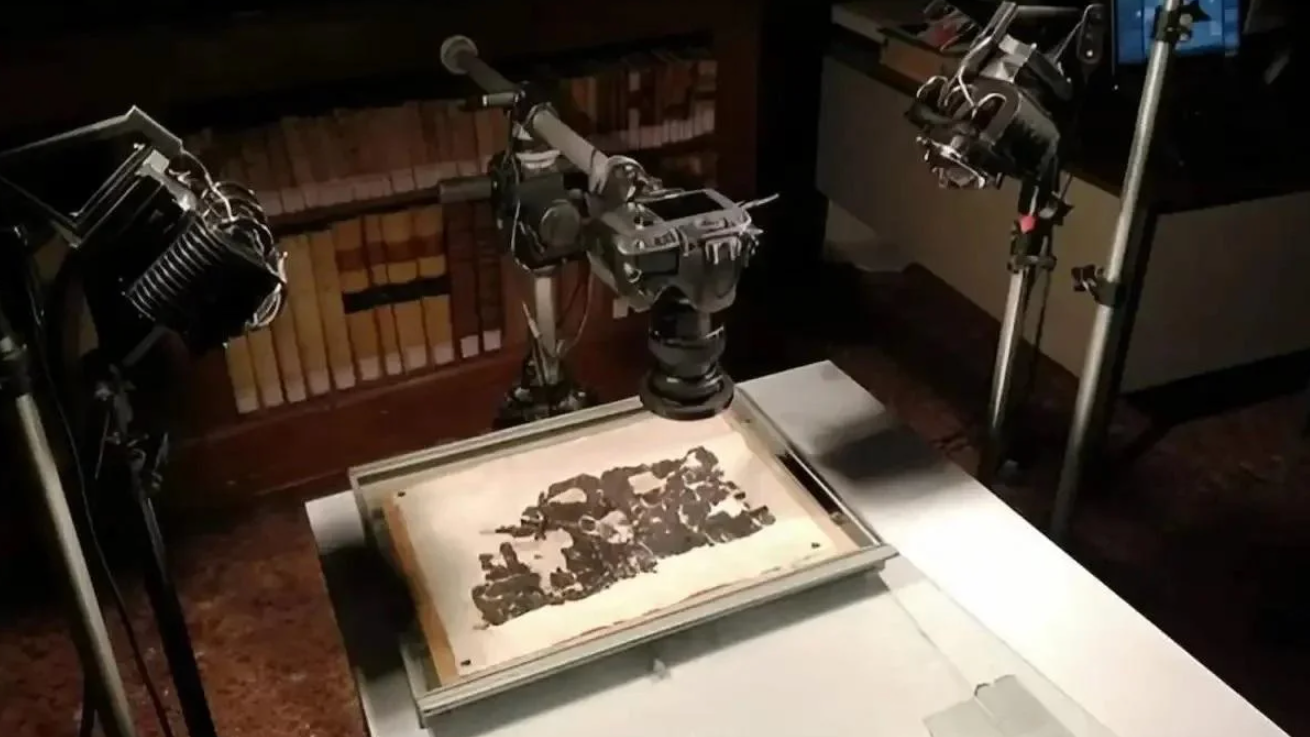Artificial Intelligence deciphers a papyrus revealing Plato's burial site
Follow us on Google News (click on ☆)
This papyrus, found in Herculaneum, an ancient city near Pompeii, was analyzed using artificial intelligence and various advanced imaging technologies.

Researchers used various types of technologies to decipher the ancient papyrus.
Credit: Italian National Research Council
Led by Graziano Ranocchia, a philosopher at the University of Pisa, the research managed to decrypt the text preserved on fragments of papyrus that were carbonized by the eruption of Mount Vesuvius in 79 AD (CE), which also destroyed Pompeii. The papyrus is part of the collection at the National Library of Naples.
The text, known as the "History of the Academy", written by Philodemus of Gadara, an Epicurean philosopher who lived between 110 and 30 BC, details the Academy founded by Plato in the 4th century BC and reveals elements about his life, including his burial place. Plato, famous disciple of Socrates, was buried in a private garden reserved for his school, located near the Museion, a sacred place dedicated to the Muses, within the Academy at Athens.
Thanks to these modern techniques, researchers were able to identify about 1,000 words of the text, which is nearly 30% of the content written by Philodemus. This text also provides a glimpse into Plato's interactions, displaying his disdain for the musical abilities of a barbarian musician from Thrace.
This discovery adds to a series of initiatives using AI to read ancient manuscripts, highlighting the significance of technological advancements in understanding our cultural past.